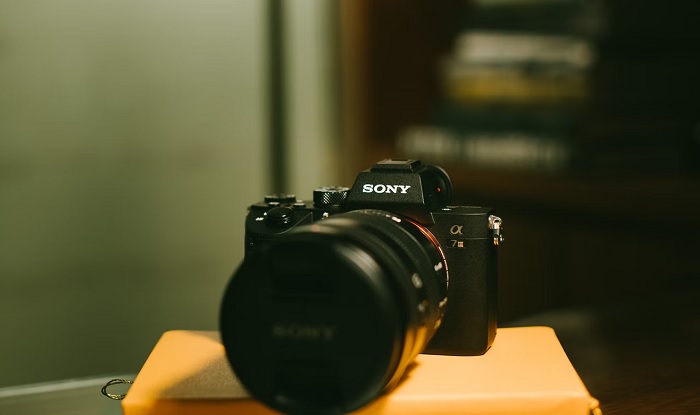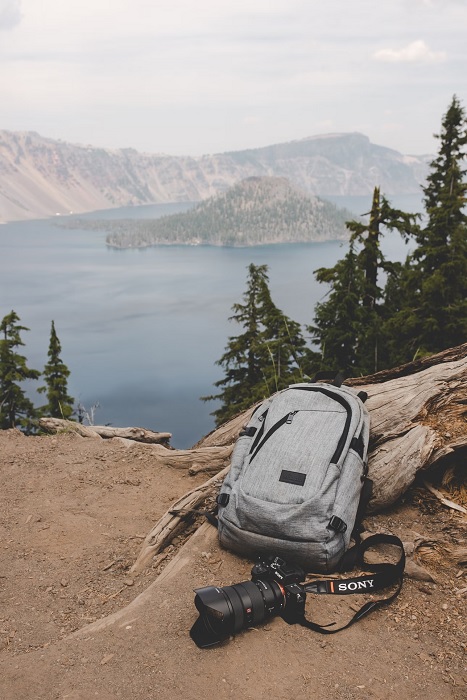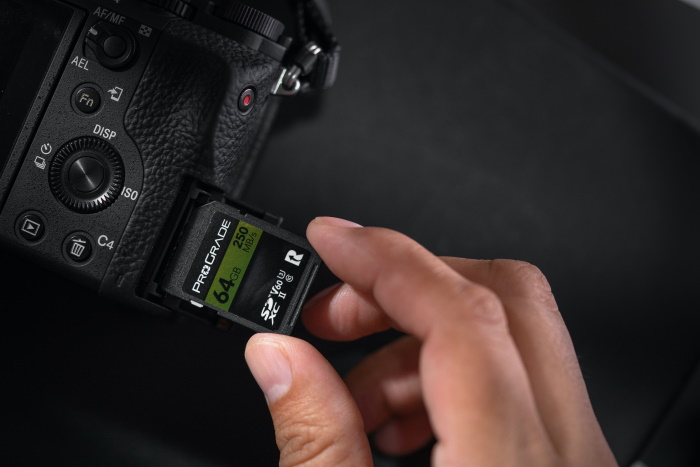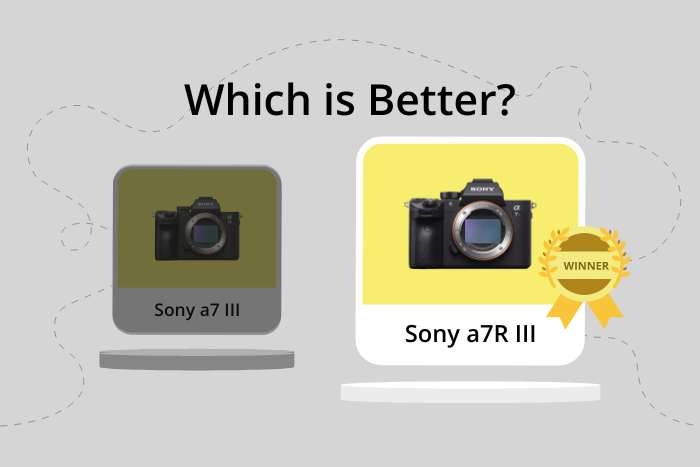Sony a7 III vs a7R III Comparison
Sony a7 III

Sony a7R III

Sony a7 III vs Sony a7R III Overview
The Sony A7 III and the Sony A7R III are both exceptional cameras. They have similarities. But there are some major differences we need to consider. And you will see what they are in this Sony A7 III vs A7R III battle.
Sony is the master of the full frame mirrorless camera. And in this article, we’re comparing two of their heavyweights in that division. On first glance, it’s the Sony A7 R III that comes out on top.

Sony a7R III
Sony a7R III Pros and Cons
- Excellent image resolution
- Wide ISO range with 50 ISO setting
- Sophisticated and reliable AF system
- Dual card slot for more capacity
- Great silent shooting mode for sensitive situations
- No video until image buffer is clear
- Long and complicated menu system
- Slow 10 fps maximum burst
- 4K video is not as smooth compared to newer camera models
There’s a big price difference, so we need to determine if the Sony A7R III is worth the extra cost compared to the A7 III.
Sony a7 III Pros and Cons
- Quick and accurate 693-point AF
- Wide ISO range with a low 50 setting
- Outstanding dynamic range and low-light performance
- Records stunning 4K video and has live stream capabilities
- Noise reduction can remove details
- Front heavy with big lenses
- Menu system is difficult to get used to
- No built-in time-lapse function
Body and Handling
Just looking at the camera bodies, I wouldn’t blame you for getting these two cameras confused. Apart from the model label, there’s very little to tell them apart.
The Sony A7 III and A7R III have the same body dimensions. And the Sony A7R III is only 0.02 lb (9 g) heavier than its rival. Sony has found a design formula that works, and they’ve run with it.

Both cameras have ergonomic bodies that feel comfortable in your hand. They are compact without being too small. And all the buttons and controls are well-positioned and easy to reach.
The build quality is excellent for both mirrorless cameras. It’s what we’ve come to expect from Sony Alpha cameras. And the weather sealing on both gives you more opportunities for outdoor shooting at any time of day!
Optics
You can’t judge a book by the cover, so now we’ll look at the optics specifications for the Sony A7 II and Sony A7R III. This is where we start to see some major differences.

Image Sensor and Resolution
The Sony A7 III and A7R III have an Exmor CMOS backside illuminated sensor. They are both full frame sensors. But despite the immediate similarities, there’s a big difference in performance.
The A7 III’s sensor has an image resolution of 6000 x 4000 px. But the Sony A7R III tops that with an image resolution of 7952 x 5304 px.
And there’s another big difference when we look at megapixel count. The Sony A7 III has a 24.2 MP sensor. While that’s not bad, it is a low number for a full frame mirrorless camera these days.
The Sony A7R III sits at the other end of the spectrum with a sensor resolution of 42.4 MP. That’s nearly double the number of megapixels of similarly sized camera sensors. You’ll notice the improved image quality at a glance. And images from the A7R III look incredible when enlarged and printed. It’s professional-standard image making.
ISO and Low-Light Performance
The Sony A7 III may not have the raw power of a high MP count, but it does outperform the Sony A7R III in low-light photography. It has a wider ISO range and impressive dynamic range.
The Sony A7 III has a native ISO sensitivity of 100 to 51,200. But this can be expanded for increased low and high ISO performance. You can take the bottom level down to 50 ISO, giving you incredible detail and color. And you can expand the top end to 204,800. That’s an impressive sensitivity range.
The Sony A7R III isn’t far behind. The native ISO settings are 100 to 32,000. And the bottom can be taken down to 50 ISO like the Sony A7 III. The top is expandable to 102,400 ISO. That’s a decent ISO range but falls just short of the A7 III.
Lens Mounts
The Sony A7 III and A7R III both use Sony FE lenses. That’s definitely good news. Sony has plenty of lenses in their FE series. And they’re all of excellent quality. Whether you want to shoot portraits, landscapes, or street photography, you’ll find a fantastic FE lens to meet your expectations.
Sony a7 III vs a7R III Video Performance
When we switch to video mode, there’s not much difference between the Sony A7 III and Sony A7R III. They both shoot 4K video that looks fantastic. But there are some differences that put the Sony A7 III just ahead.
Video Quality and Frame Rates
The 4K footage of the Sony A7R III is fabulous at first glance. It’s shot at 30 fps and looks super smooth. But there is a problem. The A7R III uses “pixel binning” when shooting 4K at 30 fps. Pixel binning is when the camera groups pixels together, essentially giving you a lower resolution.
Switching to Super35 video mode is the best solution. It crops the video, but the quality is full resolution. Once you’re accustomed to the crop factor, you’ll have professional video footage with a better dynamic range.
The Sony A7 III doesn’t have the pixel binning problem. You get full quality in 4K. You can shoot full frame in 4K at 24 fps. But you will have to accept a frame crop of 1.2x if you want 30 fps.
Both cameras have the option to shoot at 120 fps. The max resolution is Full HD at this frame rate. But you can make excellent slow-motion videos. It’s a fantastic feature for sports and wildlife videos.
Audio Recording
Multimedia creators can produce brilliant media with these two cameras. Both full frame cameras have built-in stereo microphones for sound recording. They also have 3.5 mm jacks for external microphones if you need something more professional when recording video and sound.
Sony a7 III vs a7R III Features and Benefits
You expect a full frame camera from Sony to be packed with features. And both the Sony A7 III and A7R III are true to form. But which of the two has the better range of features?
Autofocus
The battle of autofocus systems is a hot one. The Sony A7R III has an excellent autofocus system. But the A7 III’s is even better.
The Sony A7R III uses a hybrid system, combining 399 phase detection points and 425 contrast detection points. It’s dual-pixel CMOS AF that detects and locks onto eyes for accurate subject tracking. It’s quick enough for sports photography.
That seems like a formidable Autofocus system. But the Sony A7 III still takes the top spot. It uses 693 phase detection points and 425 contrast detection points for incredible subject tracking. And it continues to work well in low light. That makes the A7 III a good option for sports, wildlife, and action photographers.
Burst Mode
I can’t say we’re impressed in the burst mode department. Neither Sony camera has a fast maximum continuous shooting speed. They both max out at 10 fps with their electronic shutter.
You do have full AF tracking at 10 fps for both cameras. But you only get a burst of 8 fps if you use the live view and electronic viewfinder.
The Sony A7 III has a limit of 177 JPEG images when shooting in burst mode. That translates to 89 compressed JPEGs or 40 uncompressed RAW files.
The Sony A7R III is more restrictive. You can shoot 79 JPEG and compressed RAW files. Or you can shoot 28 uncompressed RAW files. The smaller buffer memory is due to the higher image resolution of the A7R III.
Electronic Shutter
Both cameras feature an electronic and mechanical shutter. While switching from the mechanical to the electronic doesn’t increase the burst, you can shoot silently. That’s another handy camera feature for wildlife photographers.

Image Stabilization
Both cameras have excellent image stabilization systems built in. They have a sensor-shift mechanism that gives 5-axis image stabilization. It reduces camera shake and motion blur, giving you 5.5 stops of compensation. It’s an excellent feature if you like to shoot handheld. And it allows you to shoot with a slower shutter speed.
LCD Screen
The Sony A7R III has a superior LCD screen compared to the A7 III. Both have 3-inch LCD touchscreens with full articulation. But the A7R III has a larger number of dots.
Both screens are bright and detailed so you can evaluate your shots. But the A7R III has 1.44 M dots compared to the A7 III’s 921 K dots. It’s more vibrant, giving you an accurate view of your photography work.
Connectivity
There’s nothing to separate the cameras in the connectivity department. They have Wi-Fi and Bluetooth connectivity options. And you can fire the cameras remotely when synced to your smartphone.
Sony a7 III vs a7R III Storage and Battery
Dual SD Card Slots
Photographers at all levels will be happy to know the Sony A7 III and A7R III have dual memory card slots. This feature is a huge relief, especially if you shoot in video or burst mode.
Battery Life
Mirrorless cameras don’t have a good reputation for battery life. You’re often lucky to get 300 shots from a full frame mirrorless camera before it cuts out on you. But the Sony A7 III and Sony A7R III both buck that trend.
The Sony A7R III gives you a healthy 650 shots from a fully charged battery. And the Sony A7 III takes it to another level, giving you 750 shots.
It’s worth noting that you’ll see a drop in battery life when using the electronic viewfinder. Even so, it’s an impressive duration for a full frame mirrorless camera.
Sony a7 III vs a7R III – Our Verdict
After looking at this Sony A7 III vs A7R III review, it’s still hard to say which is the better camera. The Sony A7 III and the A7R III both have their strengths.
The Sony A7R III gives you raw power in the image department. The 42.4 MP sensor blows the A7 III rival out of the water. But the Sony A7 III hits back with superior ISO, video, and autofocus performance. The A7R III has a better screen. But the Sony A7 III has better battery life.
There’s also a big price difference. The Sony A7 III is the cheaper of the two. And it’s the more well-rounded machine. Ultimately, the Sony A7R III is only worth the extra cash if you need the high-resolution sensor for a specific purpose. Otherwise, your money is better spent on the Sony A7 III.

Sony a7 III
Sony A7 III vs A7R III Alternatives
Still not ready to make a decision? Check out our other popular camera comparisons for inspiration:


